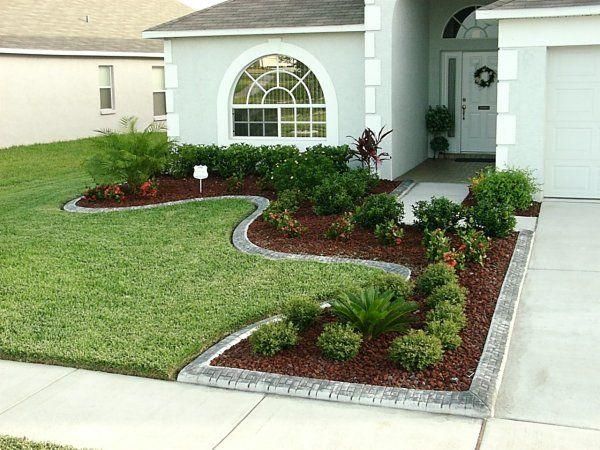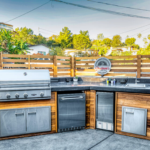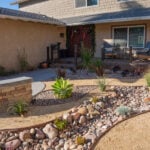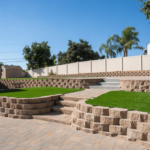The front yard is the face of a home, the initial impression it gives to passersby and visitors. Over time, weather, wear and tear, or changing personal tastes might necessitate a renovation. Redoing a front yard can significantly enhance curb appeal, increase property value, and create an inviting atmosphere. However, understanding the costs involved is crucial in planning and executing a successful front yard makeover.
Factors Influencing
Size of the Yard: The overall cost of renovating a front yard heavily depends on its size. Larger yards will generally require more materials and labor, thus increasing the expenses.
Scope of Renovation: The extent of the renovation also plays a vital role. Are you considering a complete overhaul or just specific upgrades such as landscaping, pathway installation, or adding new plants?
Materials and Design: The choice of materials and the complexity of the design can significantly impact the costs. For instance, natural stone is more expensive than concrete for paving, while exotic plants might cost more than native ones.
Labor Costs: Labor costs can fluctuate based on location, accessibility, and the expertise required for the project.
Permits and Regulations: Some renovations might require permits, especially if they involve major changes to the landscape or hardscape. Checking local regulations is essential as permit costs could add to the overall expenses.
Additional Features: Incorporating additional features such as lighting, irrigation systems, or water features will increase the total cost.
Cost Breakdown
Landscaping: Transforming your front yard through landscaping involves a variety of elements, including plant selection, soil, mulch, and labor. Costs range significantly depending on yard size and the complexity of the design. A comprehensive overhaul, encompassing all these aspects, could range between $3,000 to $15,000. This expense covers the procurement of plants, soil amendments, mulch, and the labor involved in planting and shaping the landscape.
Hardscaping: The front yard’s usefulness and beauty are greatly enhanced by hardscaping features including patios, retaining walls, drives, and pathways. Patios may go from $4,000 to $10,000, while pathways could cost anywhere from $800 to $3,000. The total expenses depend on the materials chosen, the area’s size, and the intricacy of the design.
Lawn Installation or Maintenance: Rejuvenating or installing a new lawn can cost between $1,000 to $3,000, contingent on the yard’s size. Moreover, ongoing maintenance, including regular mowing, fertilization, and aeration, might add an additional $200 to $500 annually to keep the lawn in prime condition.
Irrigation Systems: Ensuring a lush, green front yard typically involves the installation of an irrigation system. The price might range from $2,500 to $5,000, depending on the size of the region and the intricacy of the system needed to sufficiently cover the whole terrain.
Lighting: Your front yard’s security is increased by exterior lighting in addition to its aesthetic appeal. To highlight landscape, create an inviting atmosphere and illuminate paths, the cost can vary from $500 to $4,000, contingent on the kind and quantity of lighting used as well as the complexity of installation.
Additional Features: Your front yard can gain character and appeal with unusual additions like built-in seating, fire pits, and water features. These features may add $1,000 to $10,000 or more to the total cost, depending on their complexity and the materials they are made of.
Professional Design Fees: Adding a landscape architect or designer to your project can increase costs by 5% to 15%. This expense is an investment in professional insight and design expertise that ensures a cohesive, well-thought-out plan for your front yard renovation.
Factors Impacting Cost Savings
DIY vs. Professional Help: Assess the tasks you can handle independently to cut down on expenses. Simple tasks like planting or basic landscaping can often be managed by homeowners. However, for more intricate projects or tasks requiring specialized skills, seeking professional assistance might be more cost-effective in the long run, ensuring quality results and avoiding potential rework.
Material Choices: Opt for cost-effective materials that mimic higher-end options without compromising on aesthetics. For instance, concrete pavers might resemble natural stone but at a fraction of the cost. Consider durable and affordable alternatives without sacrificing the desired look and feel for your front yard design.
Phased Approach: Instead of tackling the entire renovation at once, consider breaking it down into manageable phases. This approach can help in spreading the expenses over time, making the project more financially feasible. Focus on prioritizing the most crucial aspects initially and progressively move towards other elements as your budget allows.
Local Plants and Materials: Choosing native plants and locally sourced materials not only supports the ecosystem but also tends to be more cost-effective. Native plants are better adapted to the local climate, requiring less maintenance and resources. Additionally, locally sourced materials often come at a lower cost due to reduced transportation expenses, contributing to overall savings in your renovation project.
Planning and Budgeting
Establish a Realistic Budget: Begin by outlining a budget for your front yard renovation. Consider the essential elements you wish to include and allocate funds accordingly. Be flexible but realistic about your financial constraints.
Collect Multiple Quotes: Don’t settle for the first quote you receive. Reach out to different contractors and suppliers to gather multiple quotes. This will allow you to compare prices for goods and services, providing you with the data you need to make economical choices.
Long-Term Cost Consideration: Never forgo quality for the sake of saving money. Purchasing better materials may cost more upfront, but over time, they save money on maintenance and have a longer lifespan, so the investment is usually worthwhile. Assess the life cycle costs of materials and services to make informed decisions that balance upfront expenses with long-term savings.
By implementing these cost-saving measures and adopting a strategic planning and budgeting approach, you can achieve an impressive frontyard transformation without breaking the bank. Strike a balance between your vision for the front yard and your financial capabilities, ensuring a successful and cost-effective renovation.
Enhancing Appeal
Redoing a front yard can significantly enhance the appeal and value of a property. However, the costs can vary widely based on the scope and materials used. By considering various factors, understanding the breakdown of expenses, and planning the project meticulously, homeowners can create a beautiful front yard that fits their budget. Remember, the key is to strike a balance between cost and quality to achieve a front yard that not only looks appealing but also proves to be a wise investment in the long run.







